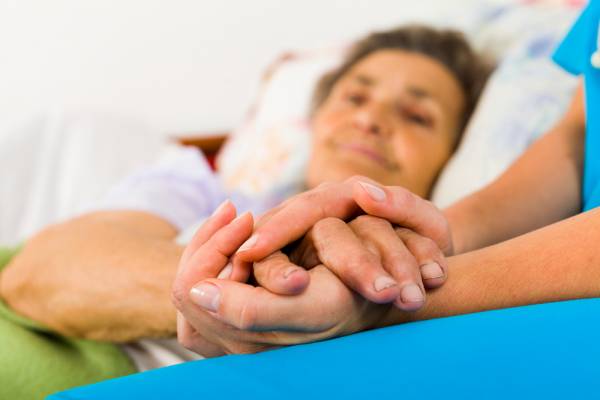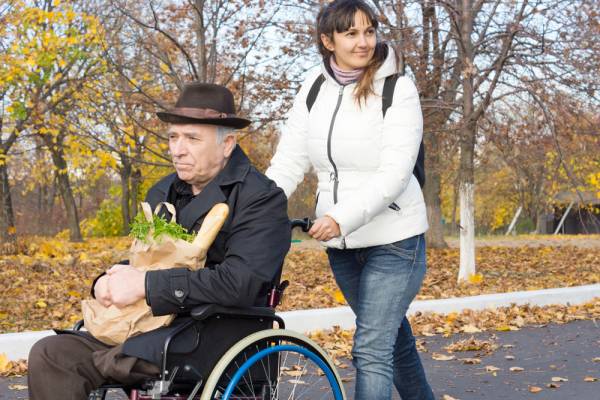Those of us who work out regularly probably do so at least in part to enhance the quality of our lives, our ability to do the things we want to do and feel good doing them. This is one of the few things in life that is within our control – until it isn’t.
What I mean is, some of us may eventually be subject to the ravages of disease and disability, and eventually, all of us are subject to the ravages of time. We do what we can to stave off these realities of life, but sooner or later all of us will succumb to one or the other. Dark stuff. But while each of us must come to terms with this fact of life (and its opposite) in his or her own way, each of us also has the capacity while we are hale and hearty to pay forward the benefits of our physical health to others, in addition to benefitting from it ourselves.
Paying It Forward
For instance, some years ago I participated in a fundraiser that required me to draw upon my physical fitness. I and dozens of others in my athletic community raised money from our family and friends for a health-related cause. In return for the donations, I pledged to complete a workout that the fundraiser organizers had specified, and the money was combined with the funds every other participant had raised. The event itself had many moving parts: spectators, heats, a professional videographer and photographer, refreshments, and a formal presentation of the amassed donations to a representative of the chosen organization. The organization was a leader in conducting research on the health issue and providing resources to people and families of people who suffered from it, and the representative himself fell into that category.
Also attendant upon the event was a lot of camaraderie and a lot of good feeling; those of us who participated felt we had done a good deed through something we already loved to do, with just a little extra footwork. I recall being grateful and proud to be part of a community that used its physical fitness for a good cause, and gratified at what we could accomplish together. And I knew people everywhere were participating in many other such events – walks, workouts, insert-name-of-physical-activity-a-thons – designed to raise money for research, resources, and support for many other social and health-related issues. Some of these events are regular occurrences and involve hundreds or thousands of people rather than the dozens who participated with me, which would probably exponentially up their power and reach.
The Reality of Life and Disease
Fast forward to the present day. In the intervening time, people in my world, both in the near and in the more distant concentric circles, have dealt with their own social and health-related issues, either having to seek treatment and therapy themselves, or supporting immediate family members in doing so. As I mentioned, and as we all know, this is a part of life, though certainly nobody’s favorite part. So maybe you’ve had something similar happen in your world. If so, you have my sympathies.
Because of what these people have experienced, I’ve had occasion to discover more, through conversation and respectful (I hope) observation, about what it is like for a single individual or family to deal with the day-to-day experience of different health-related issues. Probably not surprisingly, it is lonely and isolating. It is stressful. It can lead to despair, and it can negatively affect the health of family and friends who are trying to provide support to someone who is dealing with a health issue.

Here’s something striking: More than one person I have had the privilege of talking with or observing as they have navigated the challenges of having a social or health-related issue hit close to home has commented on the fundraising efforts like the one I described above. Specifically, they have commented on how disconnected they feel from such efforts, like they are happening to and for someone else. They don’t have the time or energy to attend these events, and they don’t necessarily see the direct connection between the events and the benefits they might receive through the medical or social services they pursue. Indeed, while these events are going on, chances are these people, the ostensible beneficiaries of the effort, are instead visiting a doctor or keeping vigil in a hospital or trying to attend to complicated paperwork. Or buckling under the pressure.
Paying It Forward – Take Two
I don’t claim to speak for these people, and I don’t claim that everyone’s experience is the same. But based on what I have observed, people who are in the situation described above might need more immediate help even more than the long-term, generalized benefits a fundraiser might help provide. On the basis of these observations, it occurred to me that I could take a second step. I had developed a sense of how I could help contribute to a larger effort. Maybe now I should think about how I could make a difference on a smaller, more personal level.
In other words, after I participate in a walk-a-thon fundraiser for a good cause, for instance, I could keep walking. I could walk to the home of a loved one who is being treated for a health condition and see if she or he needs a ride to the grocery store, someone to walk the dog, or a shoulder to cry on – whether those tears are due to the catharsis of grief or the sanctuary of laughter. I could walk to a veterans hospital or a domestic abuse shelter or my computer to learn more about ways I could touch the lives of individual people and families who are suffering, and who might benefit from my physical fitness in more immediate, intimate ways.
I’m not saying we as athletes and as human beings should not use our physical abilities to participate in fundraisers. I plan to continue to support such efforts if, after doing my homework, I believe in their mission and am confident that they are ethical and that the money raised goes to the places for which it has been earmarked. What I am saying is that, based on my small sample, this is only the first step. Maybe there is someone in your community who could benefit from you focusing your physical efforts on a more micro level, someone who would appreciate it if you “keep walking.”

If you decide to consider how you might keep walking, which I hope you do, tread lightly. Remember that the goal is not to meet your need to be of assistance, but to meet the need of someone who is going through a difficult time. Do not be intrusive, and do not assume you know what is best. If you’re not sure, ask. Do a Google search on “How can I help someone with [insert name of health issue here.] ”Pick up a book like Coaching for Caregivers by Yosaif August, which, while targeted to people who are caring for others, could also provide insight into how to approach someone who needs help. Listen more than you talk. But whatever you do, consider taking that second step.
Have you ever navigated a health issue or helped loved ones do so? What advice might you have for those of us who want to provide support on a more personal level? Post your observations to comments.
Photos courtesy of Shutterstock.






